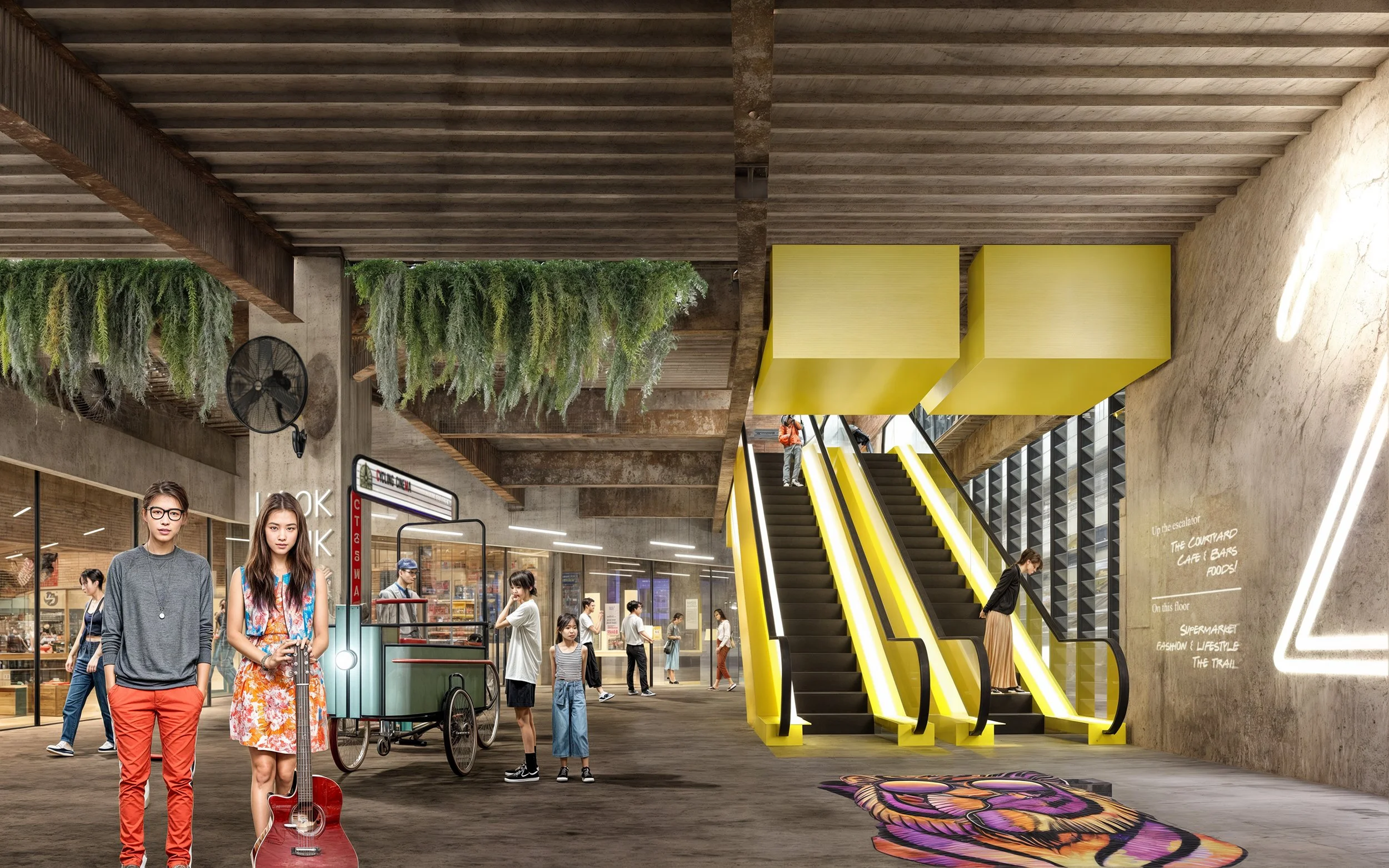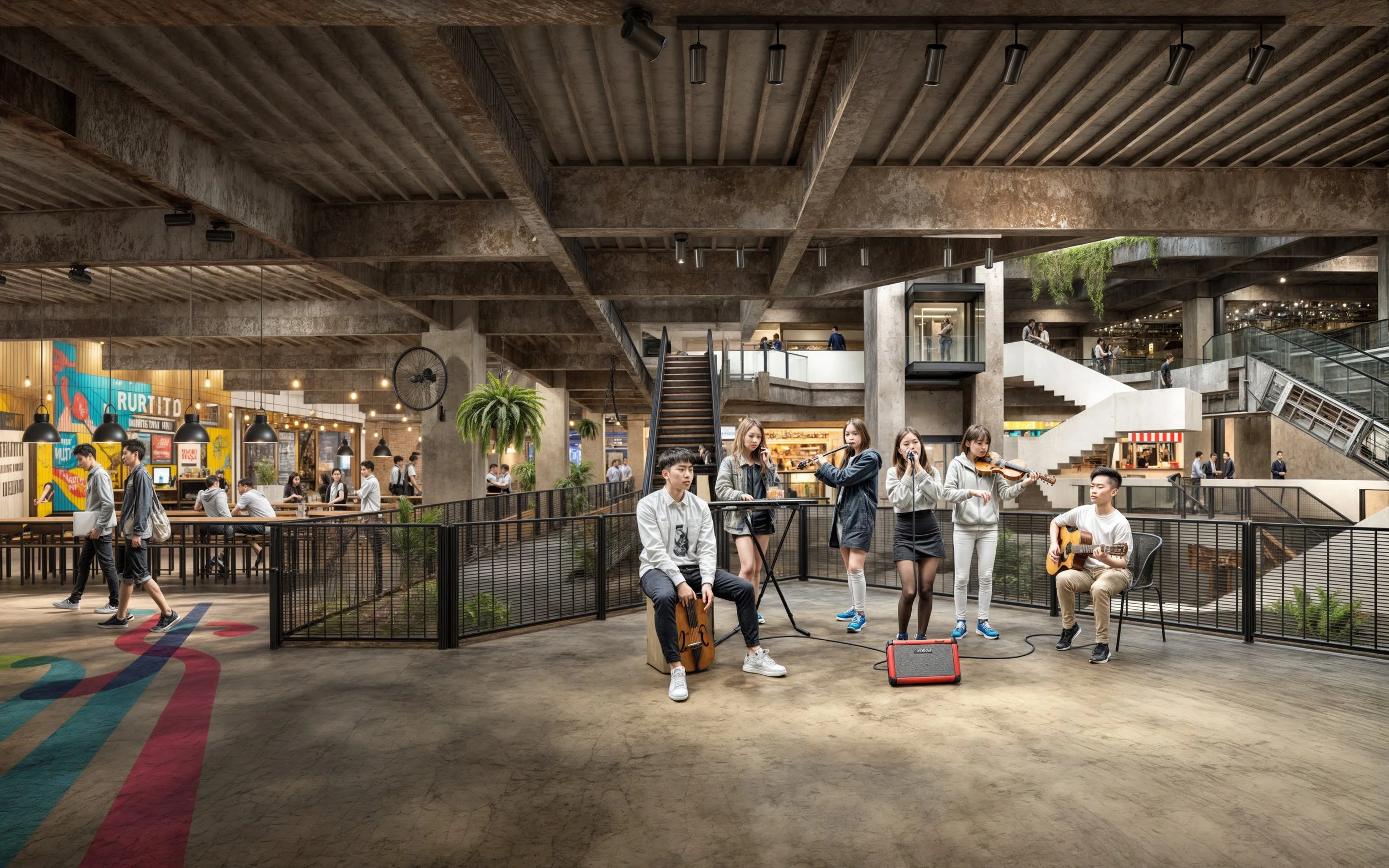New world
"From a must-go, to a long-lost dream, now reborn—New World."
Credit: A short film commissioned by Association of Siamese Architecture for an exhibition in Venice Biennale of architecture 2018

A Mall Reborn from Modern Myth
In the mid-1980s, Bangkok welcomed one of its most ambitious retail dreams: the New World shopping mall. Rising near the heart of the old town, it flaunted what few buildings in the city could—glass elevators, a soaring atrium clad in glitz, and a cosmopolitan retail lineup that drew crowds for nearly a decade.
But the dream was built on shaky ground. Literally. When it was discovered that the building had breached its permit—stacking 11 floors instead of the allowed 4—it was ordered to be partially demolished. The result was a legal and physical collapse. In 2004, during the dismantling of the illegal upper floors, structural failure led to injuries and ultimately, a full closure.
What was left behind was eerie, cinematic. A skeletal concrete relic slowly overtaken by nature. With its roof torn off, the atrium became a rain-fed basin. A shallow 3,000 m² pond formed on the ground floor. Local lore tells of residents releasing fish to control the mosquitoes; years later, thousands swam in the murky water. It became Bangkok’s urban legend: a sunken shopping mall turned fish sanctuary.
Fast-forward over a decade, and we were invited to resurrect this strange creature—not to erase the past, but to preserve its scars. The brief was unlike any other: keep the post-apocalyptic feel intact. Make it breathable. Make it relevant again. But don’t sanitize the decay.
We approached it as a kind of reverse archaeology. Instead of stripping things away, we fenced in the overgrown main hall, kept the rusting escalators, and let vegetation reclaim its kingdom. A new zigzagging staircase threads through the ruin, guiding visitors through a story of loss and unlikely survival.
The mall now operates in a naturally ventilated mode. No air conditioning. Tenants are curated like a tribe of creative squatters—tattoo parlors, barber shops, hole-in-the-wall bars, and restaurants that feel more discovered than designed.
The new roof doesn’t try to hide its intentions. Three large voids cut into its surface allow for heat release and—intentionally—let rain fall in, continuing the cycle that made this place mythic. The fish remain, still swimming below like guardians of the building’s memory.
And the façade? There was barely one to begin with. Surrounded tightly by neighboring shophouses, we focused on the only prominent face—the lift core—wrapping it in spiraling planters that speak to our chosen theme: nature’s quiet takeover. A green beacon now rises over Banglamphu Intersection, marking not just a renovation, but a redefinition.
This is New World reimagined—not a mall reborn, but a ruin adapted. A place where the ghosts of urban ambition live alongside new life. A true Bangkok paradox.














